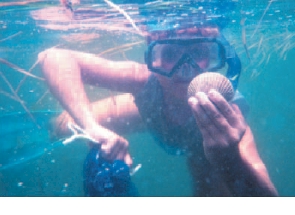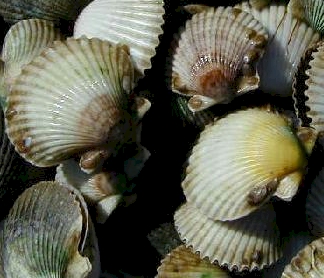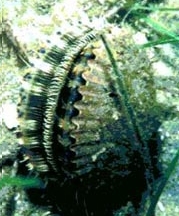Scalloping
 Go Scalloping in Homosassa or Crystal River!
Go Scalloping in Homosassa or Crystal River!
Florida Bay Scallops are found in seagrass beds along the state’s west and northwest coasts. Scallops are a popular catch in hot summer months, and thanks to recent restoration efforts, portions of the west coast which were once closed for harvesting are open again. With access to a boat and some basic snorkeling gear, you can “jump right in” for your catch and look forward to a tasty, fresh dinner in the evening. Click here to download an informational guide on scalloping, including care, handling, legal requirements, recommended equipment, how to locate them, and information on Citrus County boat ramp locations.
Call Now for Best Rates & Availability!
Crystal River Scalloping … (352)364-4600
 Bay Scallops are sweet tiny morsels of white meat found in a familiar looking shell. If you’ve ever seen a Shell gas station, then you know what the shape of the scallop shell looks like. During scalloping season, July 1st through September 10th, people from all over the area head out to the Homosassa Bay and other bays along the Florida gulf coast in search of this wonderful seafood.
Bay Scallops are sweet tiny morsels of white meat found in a familiar looking shell. If you’ve ever seen a Shell gas station, then you know what the shape of the scallop shell looks like. During scalloping season, July 1st through September 10th, people from all over the area head out to the Homosassa Bay and other bays along the Florida gulf coast in search of this wonderful seafood.
Citrus County was once home to a thriving population of bay scallops, but in 1994, the area was closed for several years to scallop harvesting because of rapidly declining catch rates. Recently, bay scallop populations are recovering and the scallop harvest season has been reopened.
The bay scallop feeds continuously by “vacuuming” or filtering small particles of algae and organic matter from the water. An adult scallop can pump as much as 15.5 quarts of water per hour. Teir many tiny blue eyes arrayed along the outer rim of the shell detect movement nearby and serve as a warning system. A variety of marine creatures, including blue crabs, stone crabs, and whelks, are able to pry scallop shells open and extract the tender meat within. Sometimes the scallop can escape this fate by swimming away. When threatened, the scallop can swim backwards by clapping it’s valves and expelling water rapidly. As broadcast spawners, scallops release many eggs and sperm into the water to maximize fertalization by other scallops. In Citrus County, spawning occurs in the fall when the temperature drops. Each scallop is capable of producing millions of eggs at once, but the mortality rate is extremely high. Only one egg out of 12 million may survive to adulthood.
 The Decline of the Bay Scallop
The Decline of the Bay Scallop
Bay scallops were once plentiful throughout Florida’s west coast but have virtually disappeared in some areas. An extensive scallop fishery existed in Tampa Bay as recently as the 1960s, but scallops are rarely found there now. Charlotte Harbor also supported a commercial scallop fishery some 30 years ago. Scientists believe poor water quality is responsible for these declines. Currently, the most extensive bay scallop populations are located north and west of the Suwannee River, particularly near the fishing hamlet of Steinhatchee and in St. Joseph Bay.
Once a population is depleted, it may not be able to recover on its own, even with improved water quality and restrictions on harvest. Scallops are broadcast spawners, sequentially releasing eggs and sperm to maximize fertilization by other scallops. If no other scallops are nearby, reproduction may not be successful. Consequently, a depleted scallop population may have to rely on neighboring populations to replenish its losses.
The problem of bay scallop population decline has become so extensive that the Florida Fish and Wildlife Conservation Commission (FWC) has closed the state to all commercial fishing for bay scallops and has severely restricted recreational harvest. In a joint project with the University of South Florida, scientists at the FWC’s Fish and Wildlife Research Institute (FWRI) implemented a program to restore bay scallops throughout much of their natural range in the state. This program entails collecting spawners from each targeted restoration site (Sarasota Bay, Tampa Bay, Tarpon Springs, Homosassa River, and Crystal River), culturing the offspring of those animals in the laboratory, and then planting those offspring at the specific site from which the adults were collected. Cultured scallops are planted in cages at densities up to 100 scallops per cage (much higher than natural densities), and their growth, survival, and reproductive development are monitored throughout the fall spawning season. The primary goal of the restoration program is to increase the number of “recruits” (young scallops coming into the population) within each targeted area, thereby increasing spawner stock for subsequent year classes. A secondary goal of the project is to develop technology for scallop aquaculture in an attempt to provide alternative employment for displaced net fishers.

